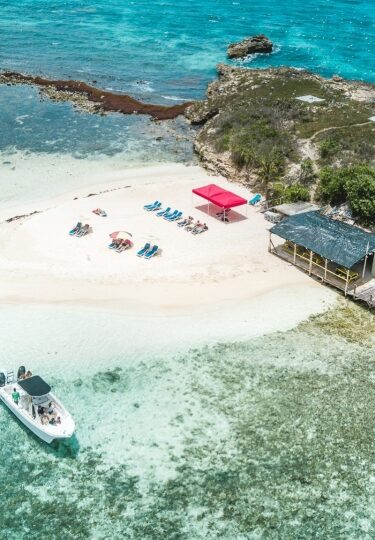Snorkeling in Antigua is superb, as the island is surrounded by a coral reef and famously has 366 beaches. With a beach for every day of the year—and one to spare—you’re spoiled for choice. Clear turquoise water, excellent visibility, and calm seas are also the norm.
The major differences come from the two coasts, the west one facing the bright blue Caribbean, and the east facing the rougher Atlantic. No matter which side you visit, you’ll find the water equally warm.
Here are the 14 best places to go snorkeling in Antigua.
Carlisle Bay Beach
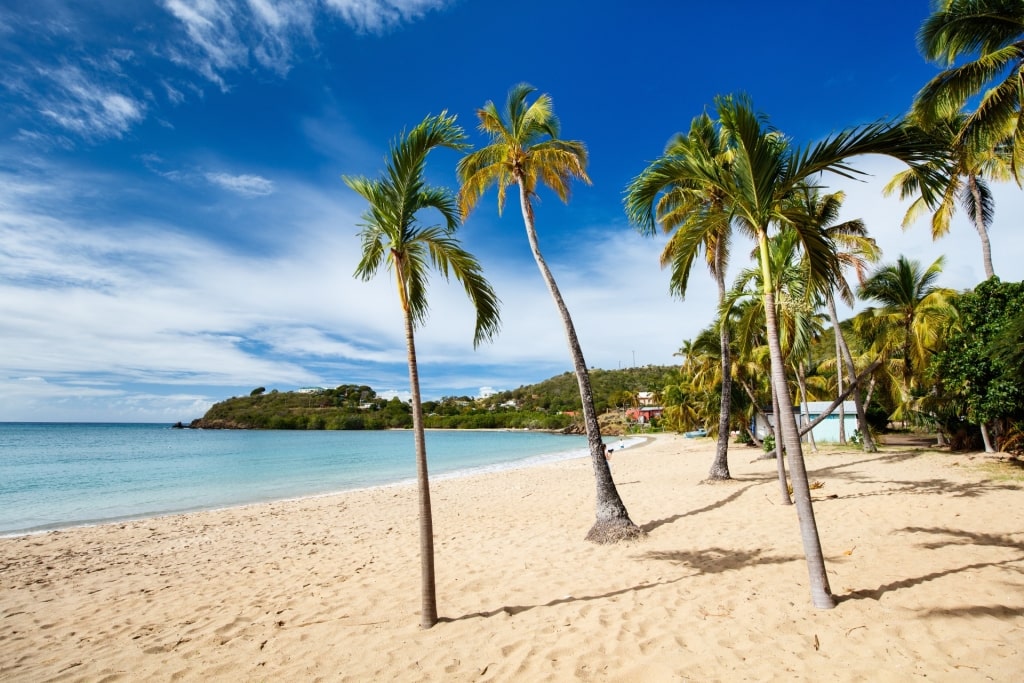
Carlisle Bay Beach
This long, curving bay is backed by palm trees and low hills. Its white, sandy beach makes for a perfect Caribbean setting.
The beach is near the small town of Old Road on Antigua’s south coast. Carlisle Bay is a deep, southwest-facing bay that provides plenty of shelter for the beach.
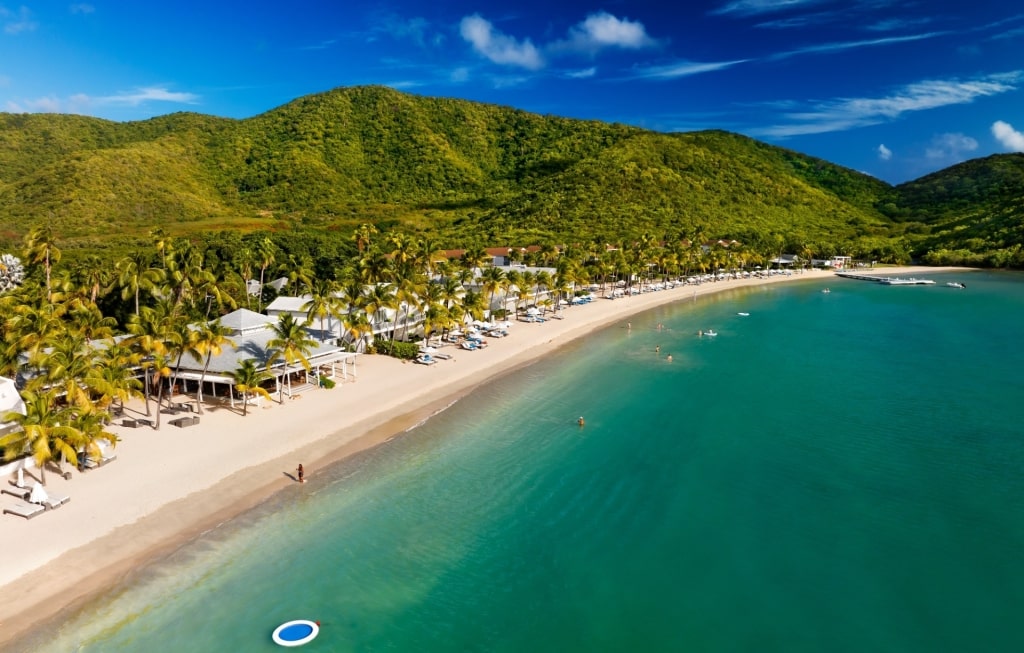
Carlisle Bay Beach
The calm, clear water makes for idyllic snorkeling conditions. The water is shallow enough for children and complete beginners to feel safe.
This is also a popular spot for divers, who can explore six wrecks inside the Carlisle Bay Marine Park. The wrecks range from a tugboat to a former drug-smuggling freighter.
Snorkelers will enjoy the shallower wrecks, which include a barge at only ten feet deep. The abundant tropical fish in the bay include sea horses, octopus, turtles, and rays.
Green Island
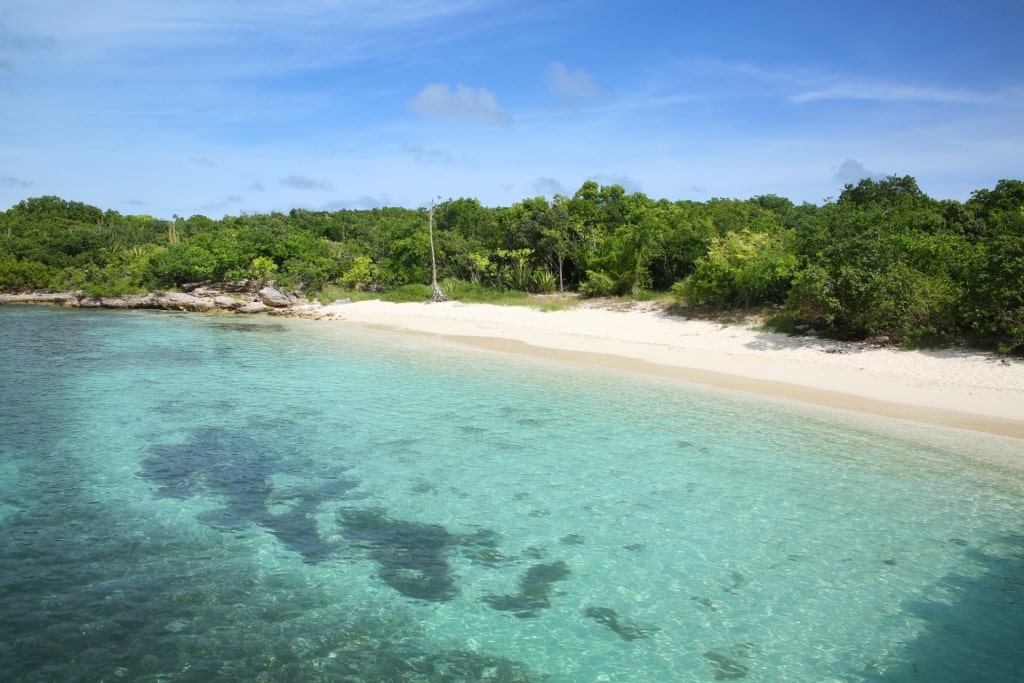
Green Island
Green Island is a private island on the east coast of Antigua. It’s reached by a short boat trip, usually from Long Bay but also from other resort areas.
A tiny clone of Antigua, the island has white sand beaches and a surrounding coral reef. That makes it perfect for snorkeling, with an abundance of green turtles making for a major plus.
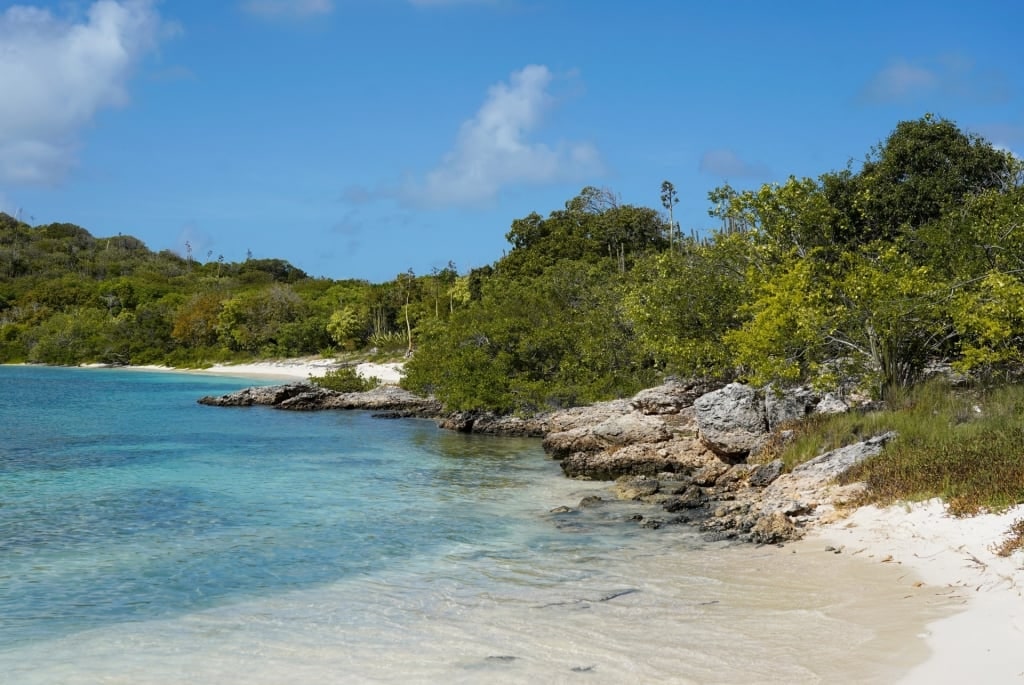
Green Island
Its reef is healthy enough to be teeming with marine life, and the interior is covered in vegetation, hence the name. As the island is normally uninhabited, this really is a slice of paradise.
The shoreline is cut with several large bays, so there is a long coast to explore. Besides the turtles, which are accustomed to human company, there are plenty of birds, and other wildlife to see on both land and sea.
Stingray City
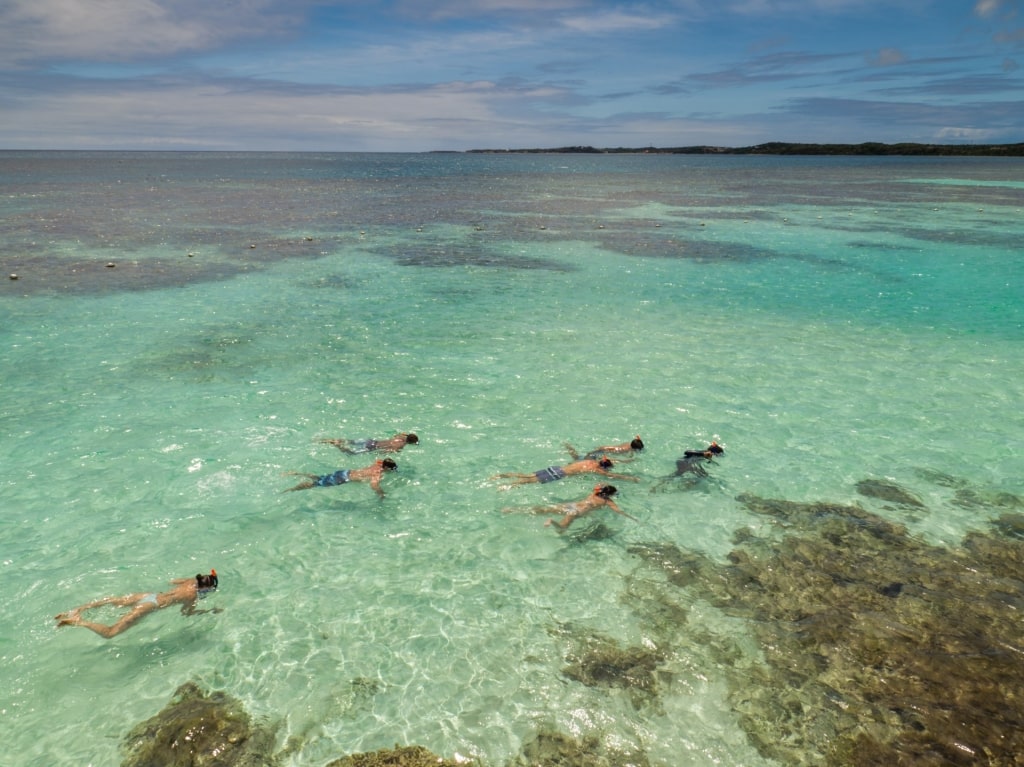
Stingray City
There are few Caribbean thrills to compare with snorkeling with rays. Experience this at Seaton’s Village on the island’s northeast coast, only 30 minutes from St. John’s.
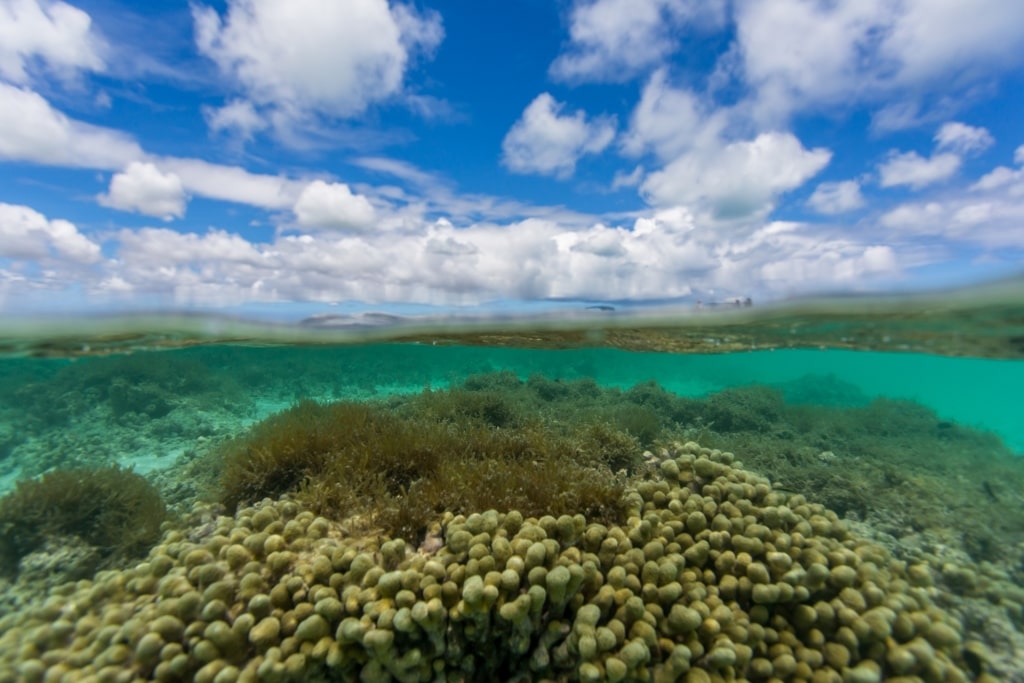
Stingray City
After a safety briefing, you take a ten-minute boat ride to Stingray City. Snorkeling here is one of the best things to do in Antigua. This is an area of clear, shallow water on a brilliant white sand bottom, with plenty of reef fish to see.
Some 50 or so rays normally arrive as soon as your boat docks at the pier. These particular southern stingrays are well used to humans, so much so that the guides have given them all names.
You have the option of joining the guides in feeding squid to the stingrays. The rays don’t bite but do suck strongly, so remember the briefing, and keep your thumb tucked in.
Pillars of Hercules
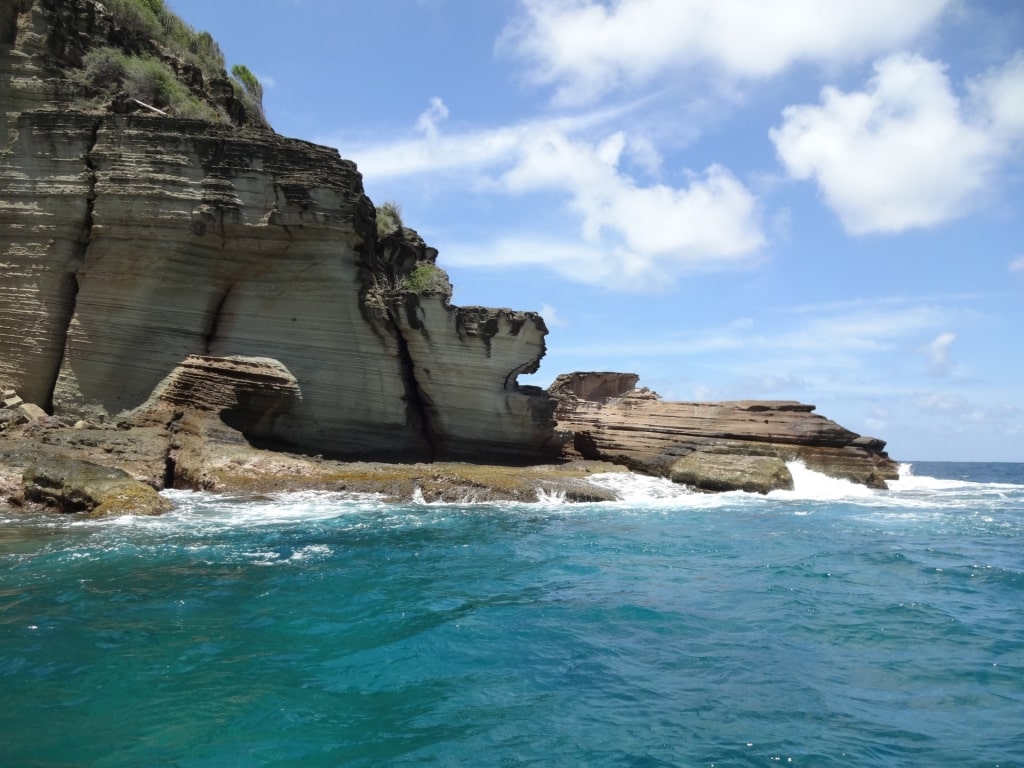
Pillars of Hercules
A set of natural columns in a cliff gives The Pillars of Hercules its name. They are at the mouth of English Harbour, inside Nelson’s Dockyard National Park.
While you can hike here at low tide, be warned that parts are very rough. It’s safer to join a boat tour, where you’ll have a better view of the “pillars” from offshore.
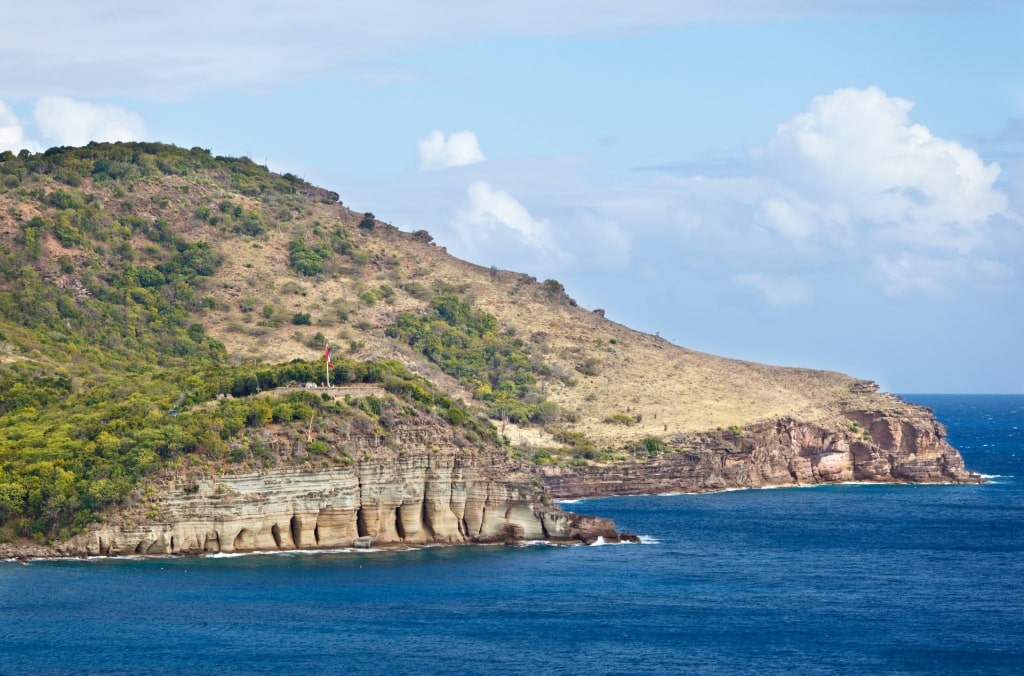
Pillars of Hercules
These include a chance to snorkel around the base of the rocks. Expect to see plenty of fish among the rocks, which is part of a coral nursery program.
The sea here is home to species such as green turtles, octopus, and parrotfish. Further out, keep an eye out for an 18th-century anchor.
Prickly Pear Island
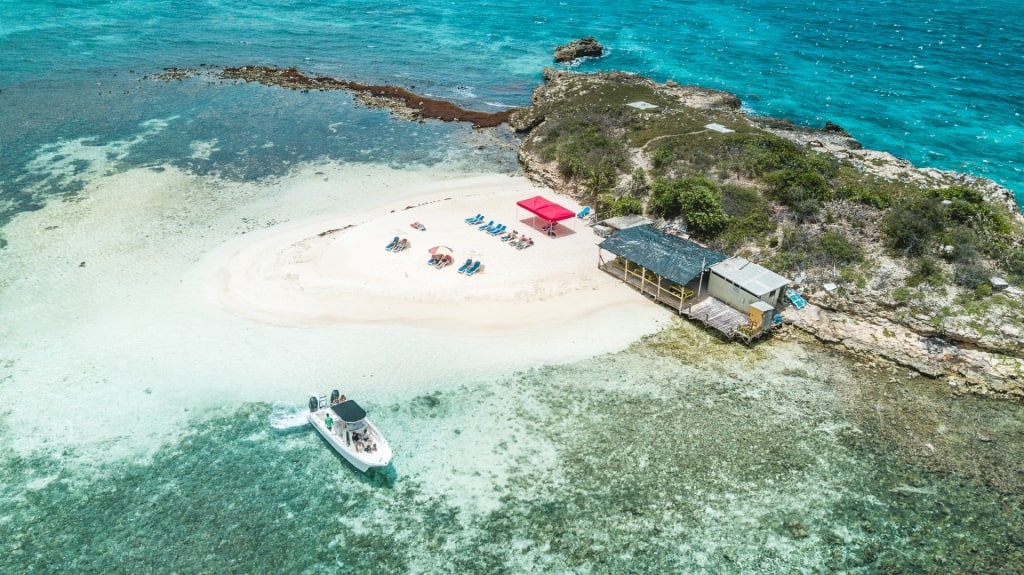
Prickly Pear Island
This beautiful tiny island off the north coast offers some of the best snorkeling in Antigua. It’s usually explored on day tours, which will provide everything you need for snorkeling.
The experience is as close as you really want to come to being cast adrift on a desert island. However, most desert islands don’t come with an open bar and a tropical buffet.
Tearing yourself away from the Instagram-worthy background, you’ll find the paradise continues underwater. The white sand sea bed makes for perfect visibility for snorkeling.
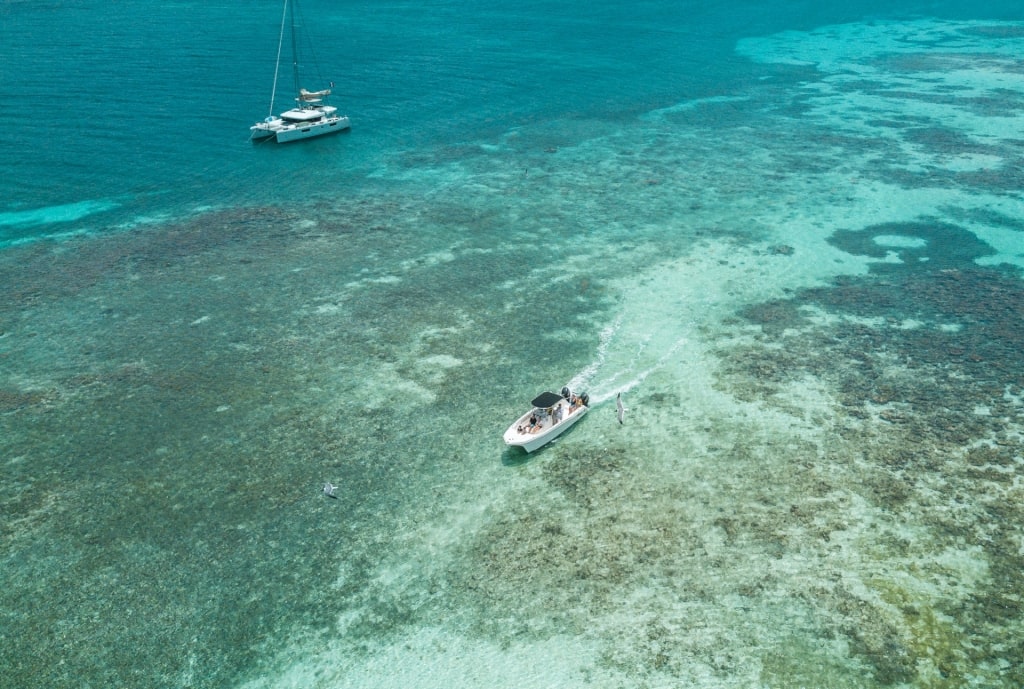
Prickly Pear Island
The water is shallow for some distance, which is reassuring for beginners. Only 20 yards out, the reef is busy with sea life, and you could spend hours watching it.
When you’ve had enough, the tour offers beach chairs and sun shades. This is understandably one of the most popular outings in Antigua.
Ffryes Beach
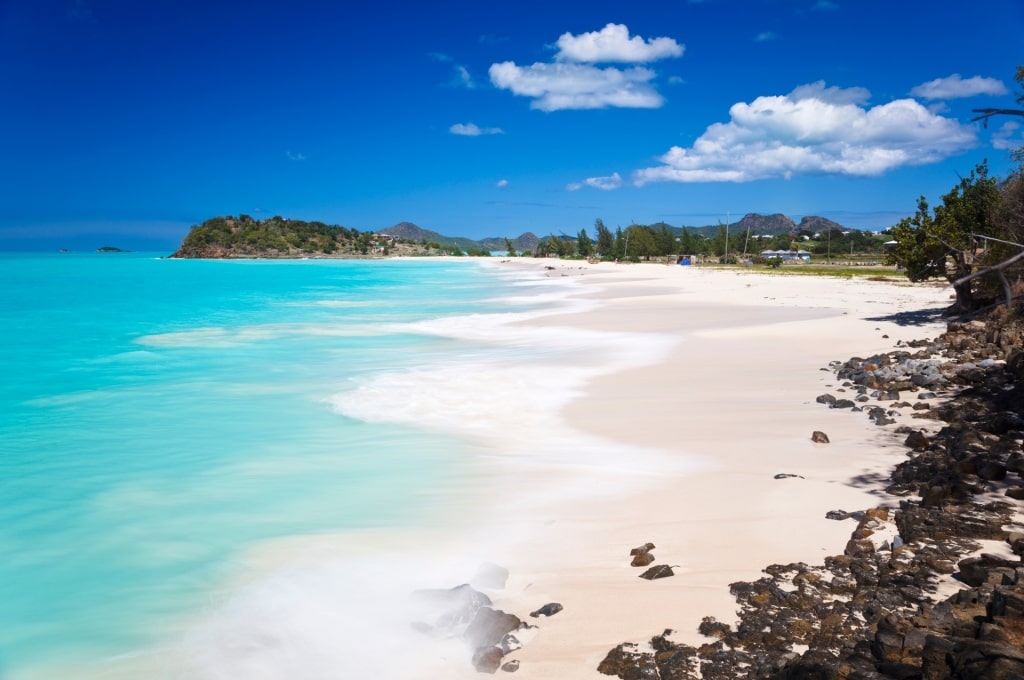
Ffryes Beach
Facing the calmer west coast, Ffryes Beach is one of the most beautiful beaches in Antigua. It’s famous for its white sand, warm, shallow water, beach bars, and restaurants serving authentic Antiguan food.
The beach runs north-south, facing a view on a clear day of Montserrat and Nevis. Shallow water makes for another beginner-friendly experience.
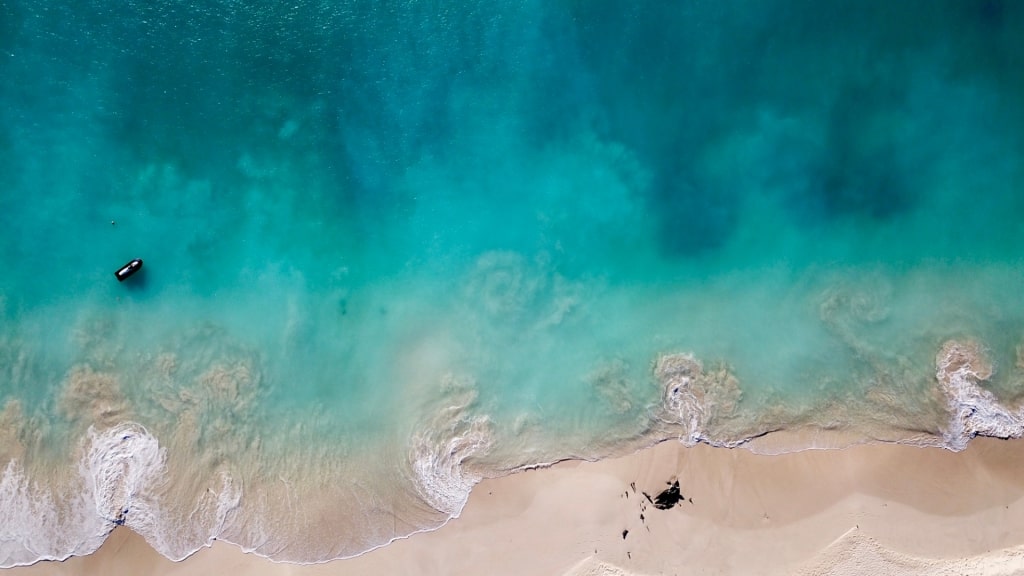
Ffryes Beach
The only downside of all the fine white sand is that it can reduce visibility when stirred up. Head to the rockier north side of the beach to see reef fish and sea urchins, among other species.
Experienced snorkelers will want to explore further afield, but this is the perfect setting for novices. It’s a lovely beach literally to dip your toe in the water, in between sunbathing, and enjoying the Caribbean lifestyle.
Dickenson Bay
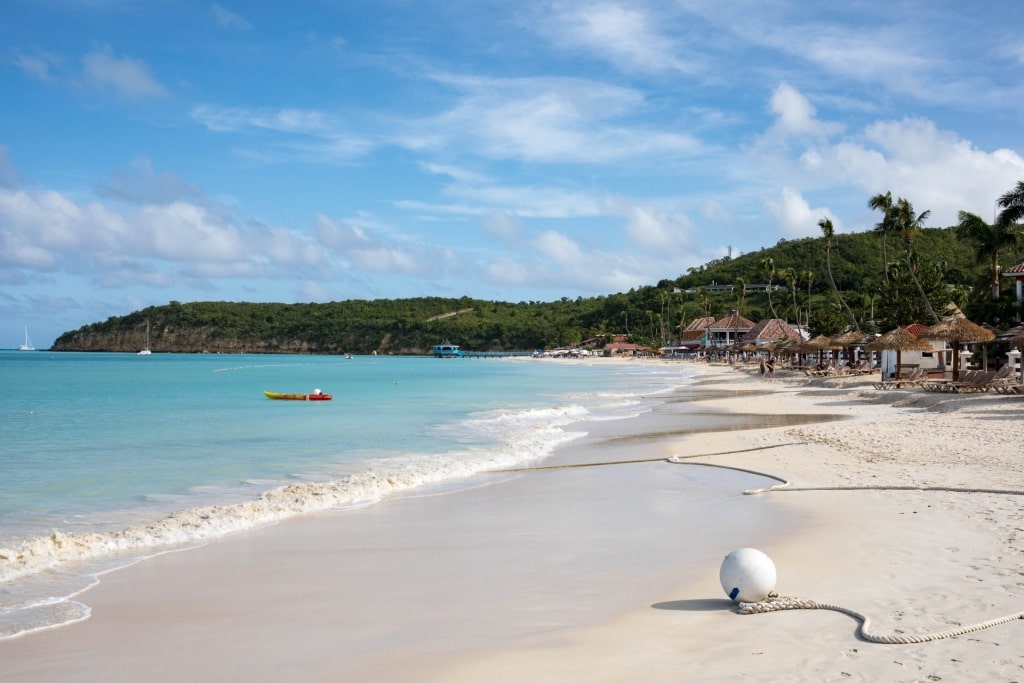
Dickenson Bay
Only a ten-minute drive from St. John’s, Dickenson Bay is one of Antigua’s most popular beaches for good reason. With a number of resort hotels, restaurants, and watersport centers, it has something for all visitors.
The beach is on the northwest coast, well sheltered by headlands from the Atlantic. While snorkeling just offshore is uninspiring, a bit further out is the excellent Paradise Reef.
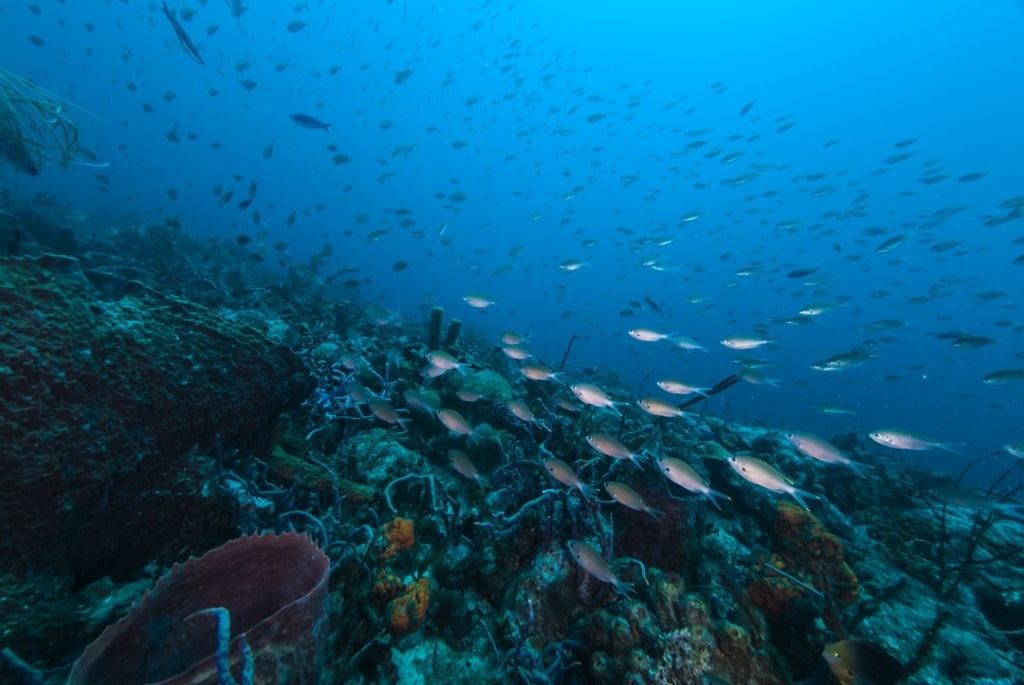
Paradise Reef
While braver souls do swim there, the safest way is to find a boat tour. The reward is some of the best snorkeling in Antigua.
There is plenty to see, including plenty of elkhorn coral, anemones, and many interesting fish species. These will normally include schools of wrasse, needlefish, or yellowtail snapper.
Half Moon Bay
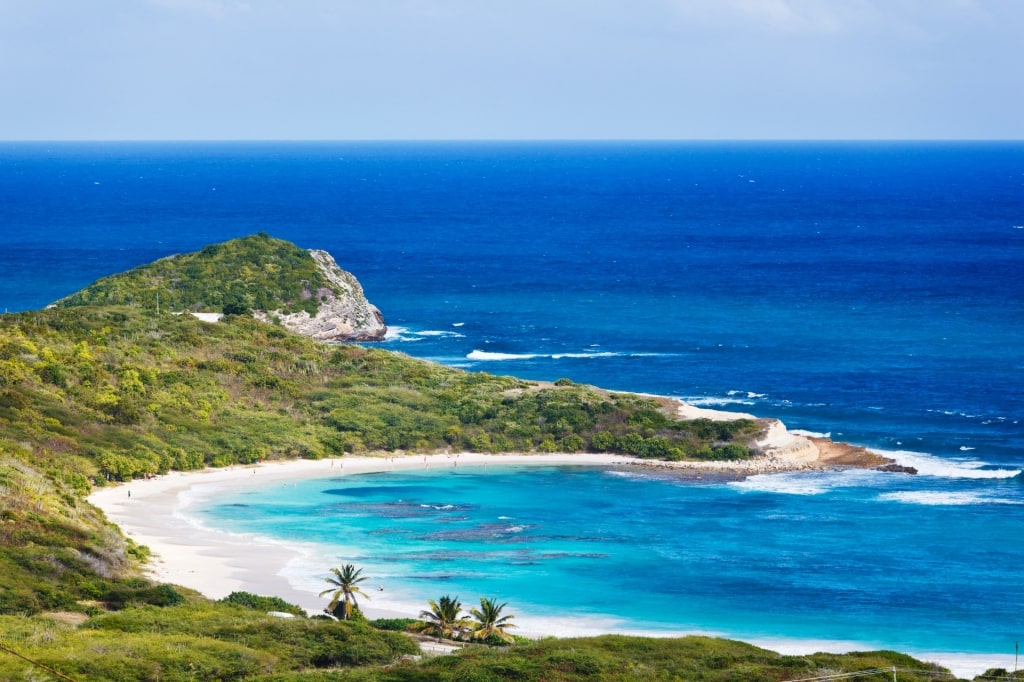
Half Moon Bay
Half Moon Bay sits just south of Exchange Bay on the southeast coast. Both bays are enclosed by larger headlands, within which sits the tiny Smith Island.
The reef starts inside those headlands, making this a great place to snorkel within a defined area. You can snorkel right off the beach, although do keep an eye on the currents.
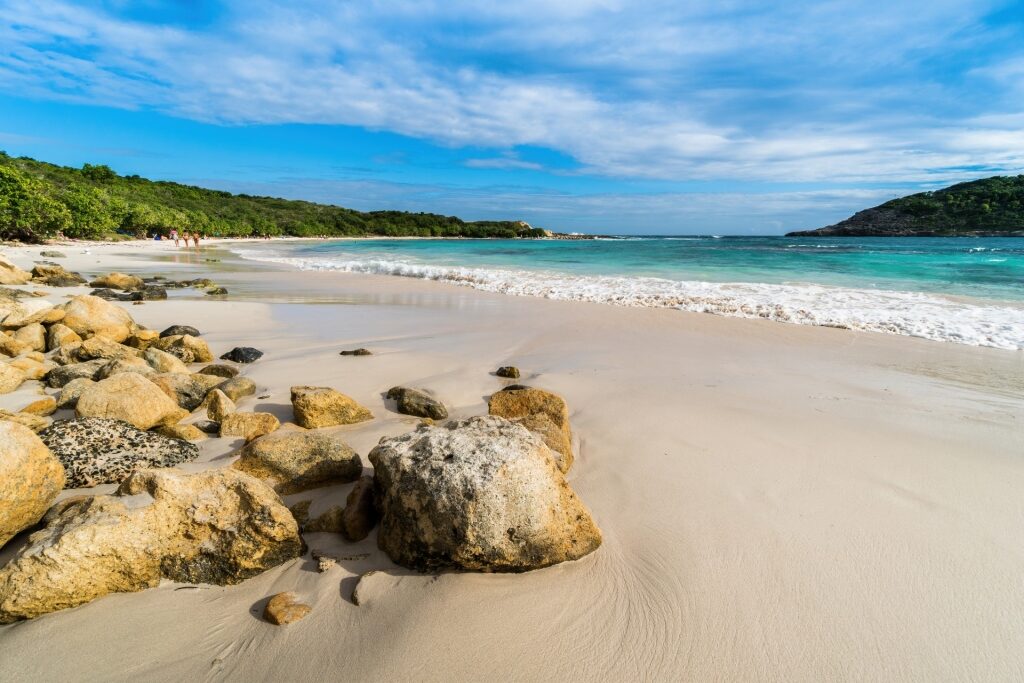
Half Moon Bay
The best place for snorkeling is off the rocks at the calmer northern side of the bay. Those Atlantic currents can stir up the sand elsewhere, reducing visibility.
Half Moon Bay attracts body surfers, and that’s a good option once you tire of snorkeling. Afterward, relax in the friendly bar, and you’ll soon understand why this is regarded by many as Antigua’s best beach.
Long Bay Beach
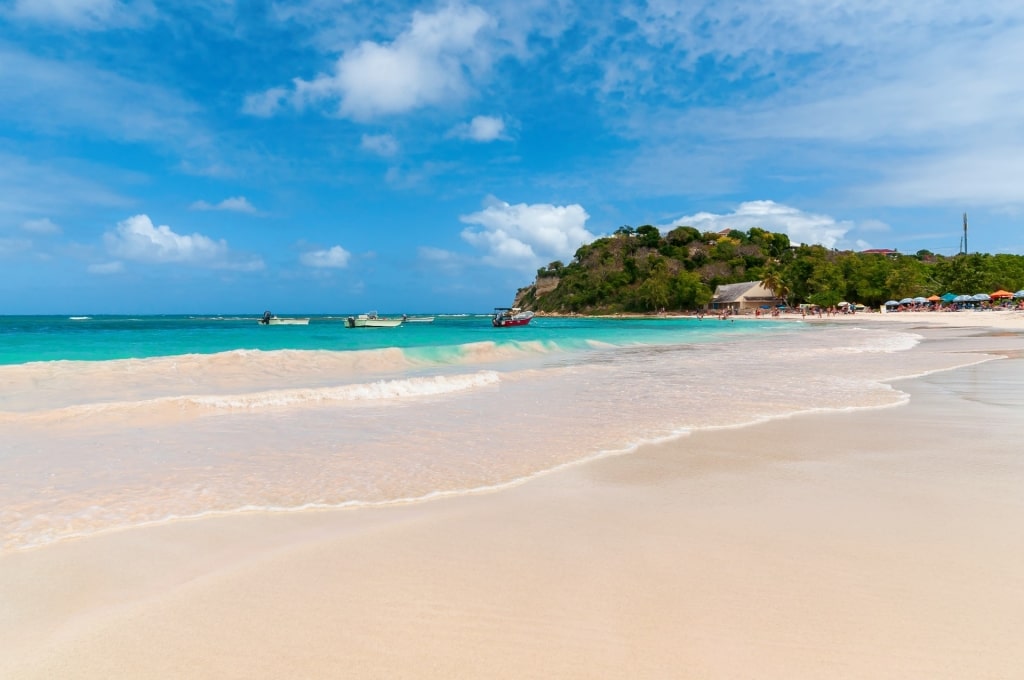
Long Bay Beach
This beach is on a curving part of the northeast coast that lends it its name. A white-sand beach, it has excellent snorkeling—some would say the best in Antigua.
Head to the right-hand side of the mile-long beach for the best underwater viewing. You can see fish while standing on the shore, so you can imagine what you see once in the water.
The reef, only 100 feet offshore (with another reef the same distance again), has a good variety of species. You will find sponges, moray eels, parrotfish, and many others.
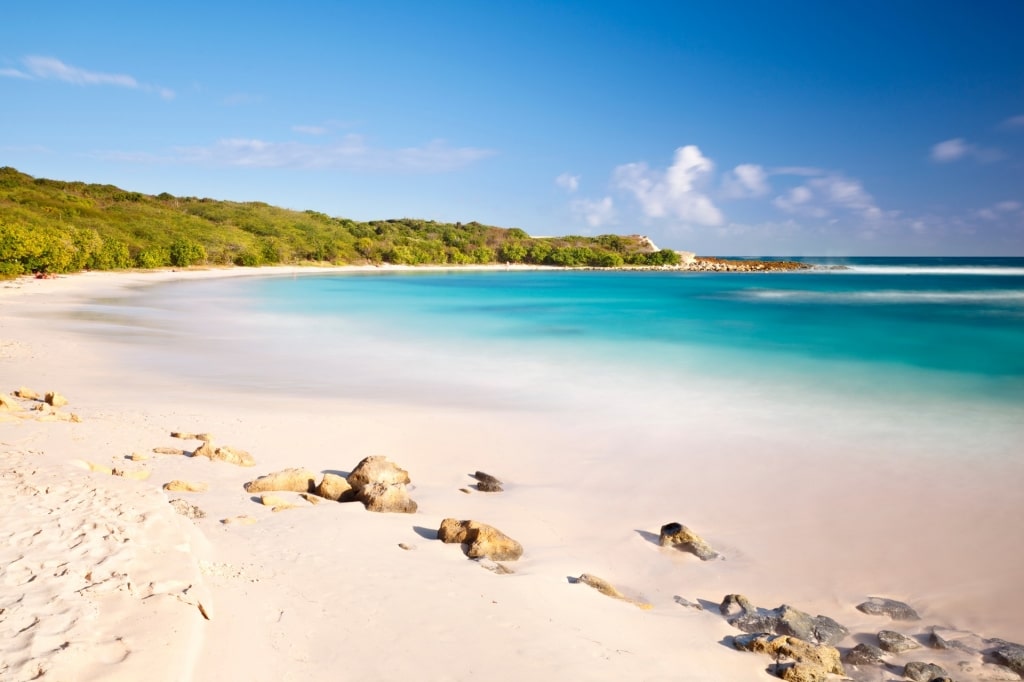
Long Bay Beach
While this area is packed with resorts, Long Bay Beach remains relatively undeveloped. There is a famed pasta restaurant, and a few handicraft stalls, but you have to go to the nearby village of Willikes for anything more.
Cades Reef
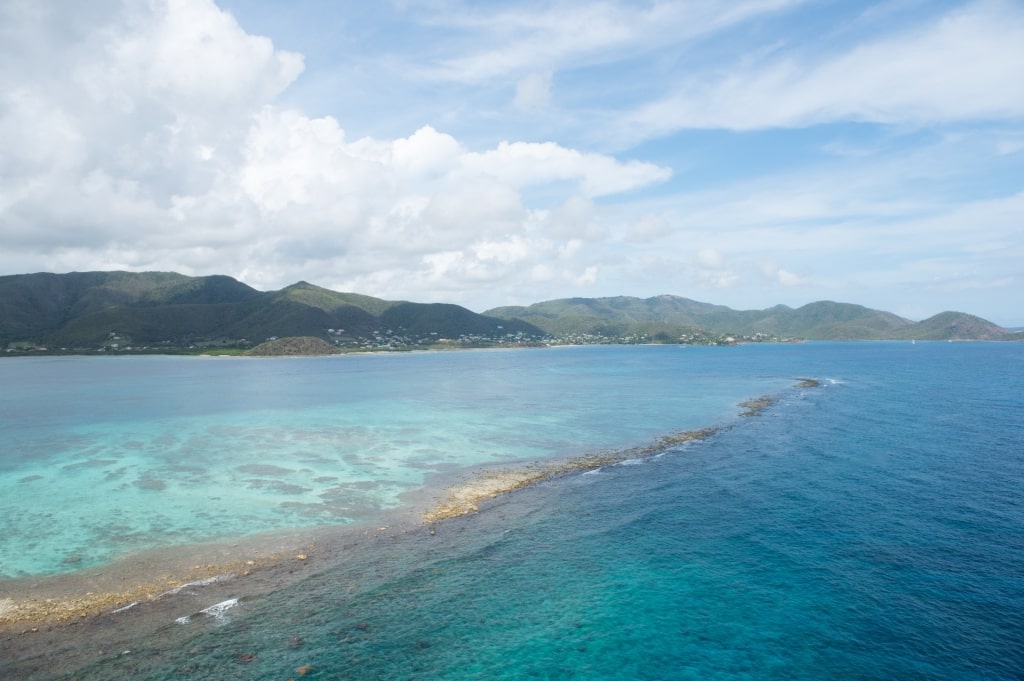
Cades Reef
This coral reef off Antigua’s southwest coast offers some of the best snorkeling in the Caribbean. Excellent visibility—up to 100 feet in good conditions—is only part of its appeal to both divers and snorkelers.
Cades Reef is two miles long, and a mile offshore, taking about 20 minutes to reach by boat. Most visitors arrive on a catamaran tour, with snorkeling gear, and a guide included.
It’s one of the healthiest reefs of Antigua, with abundant shoals of fish. Among the larger species, you might see a nurse shark, but moray eels, rays, and barracudas are more common.
The reef is protected within Cades Bay Marine Park, which has 20 dive sites. These vary greatly in depth, but several are suitable for snorkeling.
Deep Bay Beach
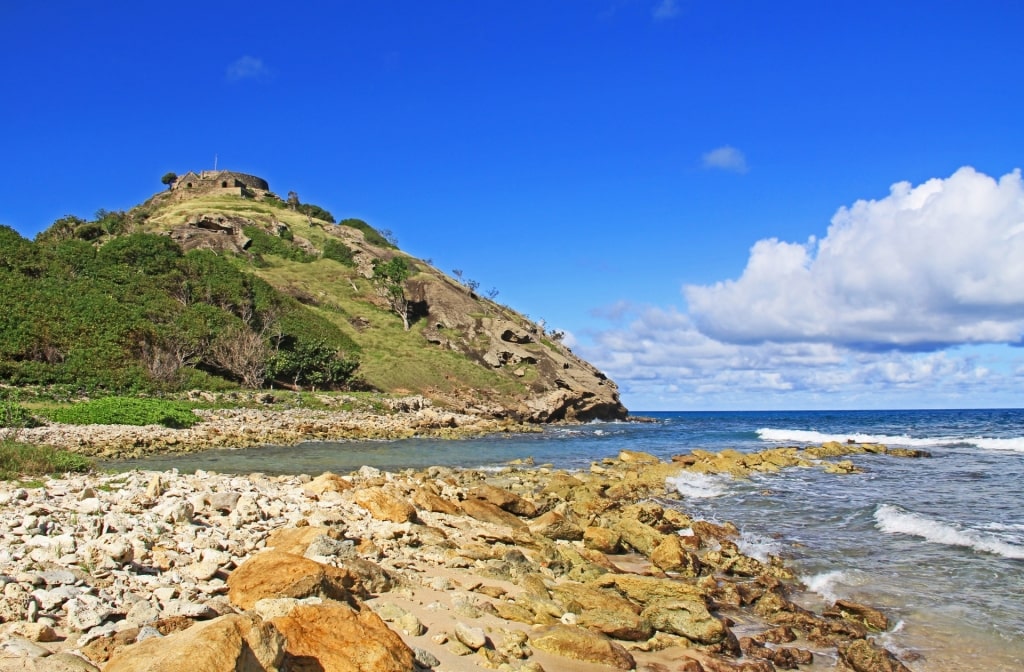
Deep Bay Beach
Only 20 minutes from St. John’s on the west coast, you’ll find the peaceful Deep Bay. It’s famous for the 18th-century Fort Barrington which overlooks it, reached by a short, steep climb.
Among divers and snorkelers, the bay is even more noteworthy for the wreck of the Andes. This small merchant vessel sank here in 1905, after its cargo of tar bound for Cuba caught fire.
The three-masted ship is now encrusted with coral and other marine growth and sit in only 30 feet of water. The lighting is perfect for photography and puts the wreck firmly among the best places to snorkel in Antigua.
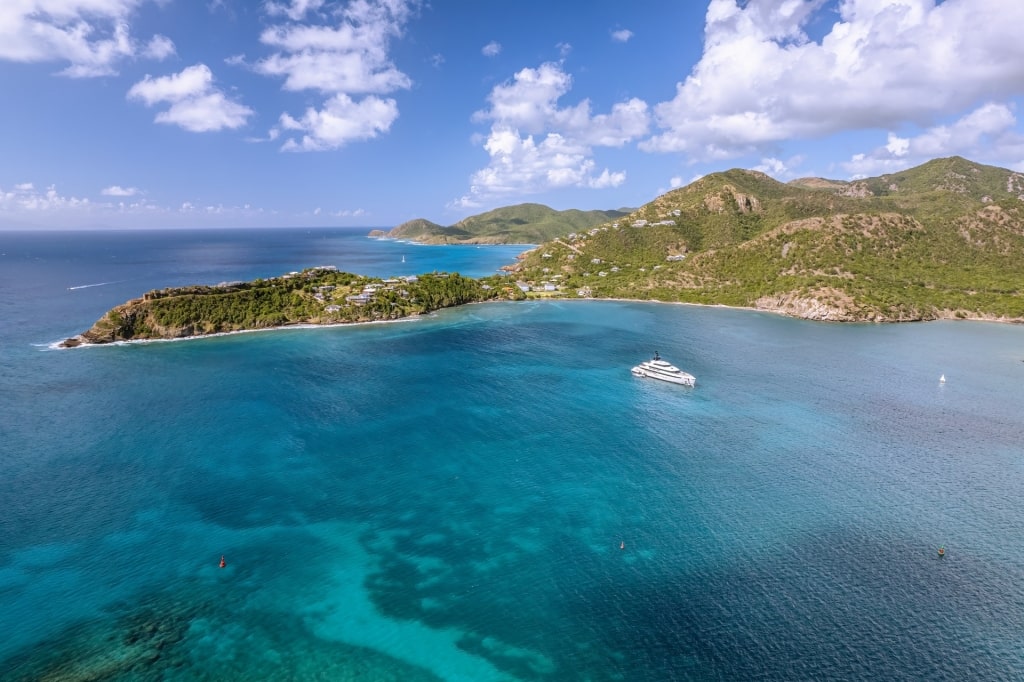
Deep Bay Beach
Antigua has 127 recorded shipwrecks, a number reflecting the danger of its intricate, rocky coastline, and its key position on a major trade route. Fortunately, modern navigation aids now make sailing in its waters a more pleasurable activity.
Galleon Beach
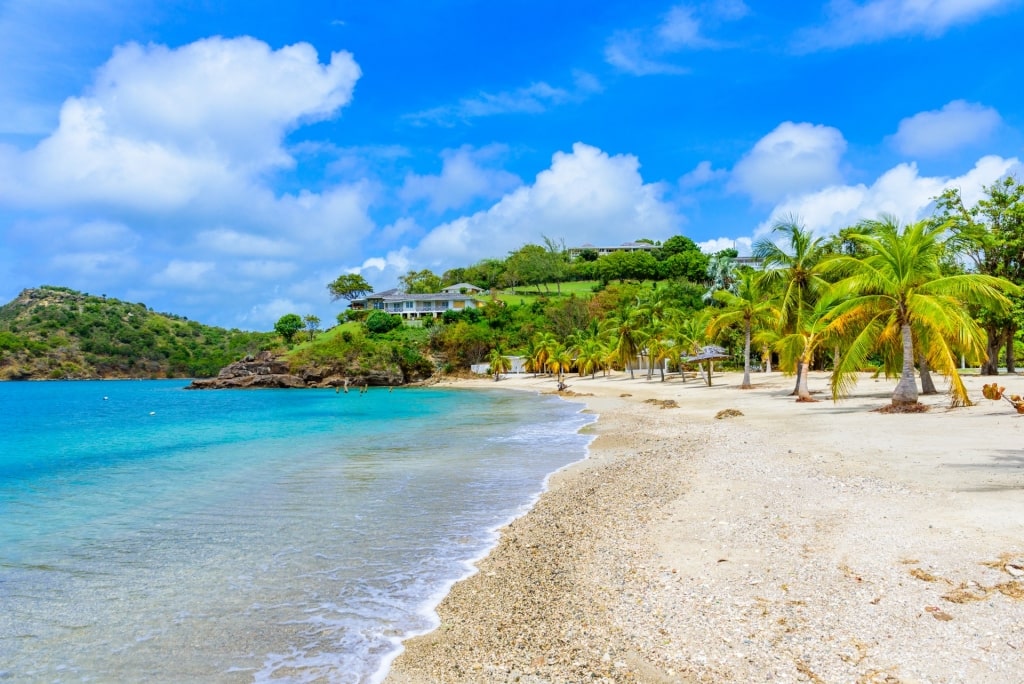
Galleon Beach
Galleon Beach looks out on the opening to English Harbor, the deep natural harbor that was the 18th-century base of the British Royal Navy. It’s now a center for more peaceful yachting, so you can still expect to see plenty of sails as you relax on the beach.
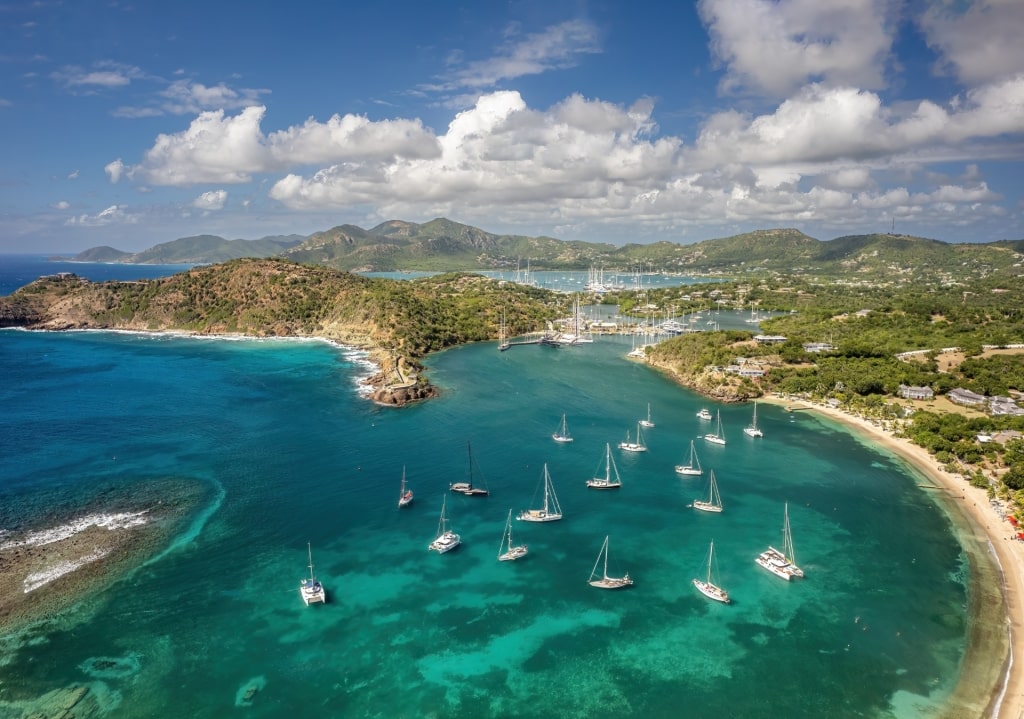
Galleon Beach
This is one of the quietest, most secluded beaches on Antigua. With plenty of sand in a well-protected bay, it’s a great place to lose track of time when you swim or snorkel.
You’ll find lots of fish and two small shipwrecks on the left side of the bay. There is also plentiful sea glass for those who love this colorful reminder of the past.
Species to see include moray eels, squid, stingrays, and turtles. You’ll lose count of the many smaller species, including angelfish, snapper, and parrotfish.
Pigeon Point Beach
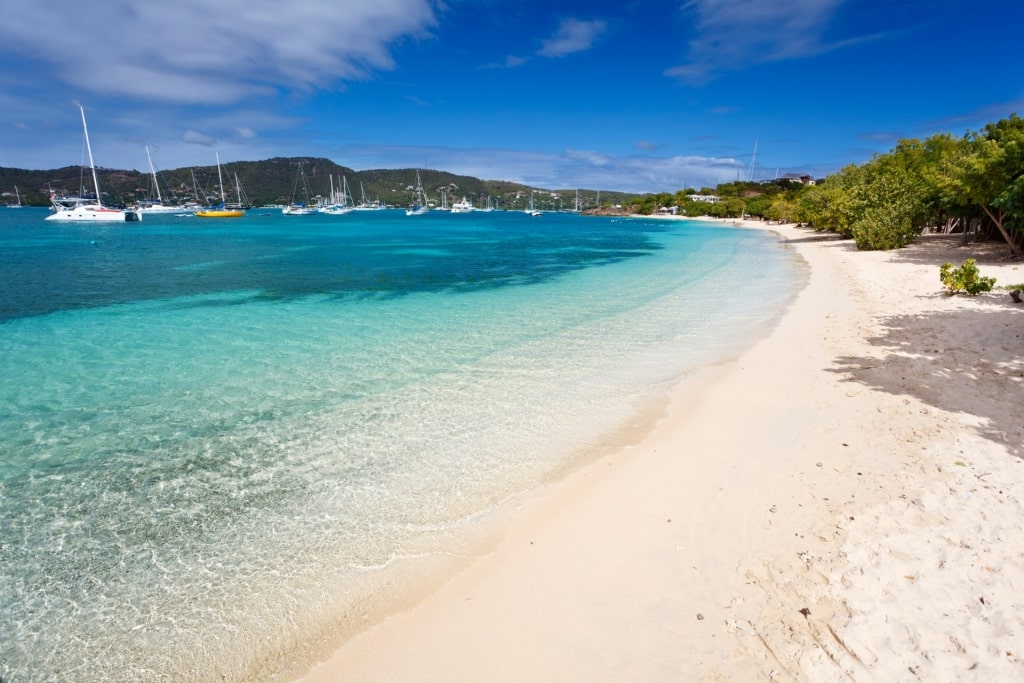
Pigeon Point Beach
Across a large headland from Galleon Beach is Pigeon Point Beach. It has a similar position at the mouth of Falmouth Harbour.
This is another great place for sailors, but is even more popular with swimmers and sunbathers, who enjoy splashing around in the calm, shallow water.
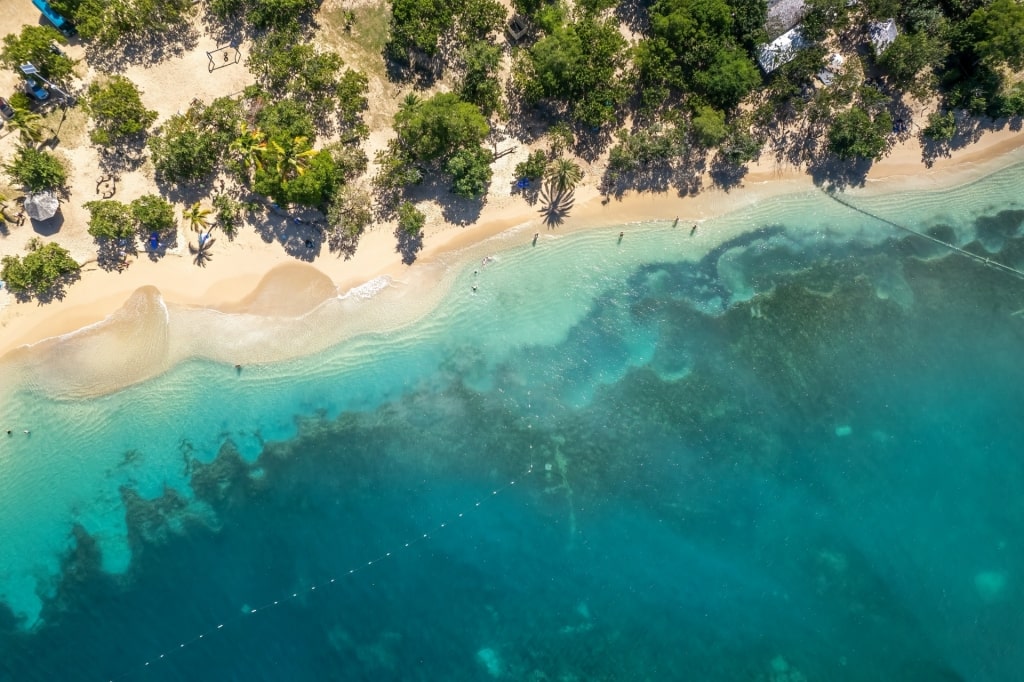
Pigeon Point Beach
While the snorkeling is not as good as at Galleon Beach, there is a large expanse of coral just off the shore. This is a good site for families and for less experienced swimmers or snorkelers.
There is a restaurant at either end of the beach for relaxing afterward. Palm trees also offer shade if you just want to take in the idyllic view of the sail-dotted Caribbean.
Turners Beach
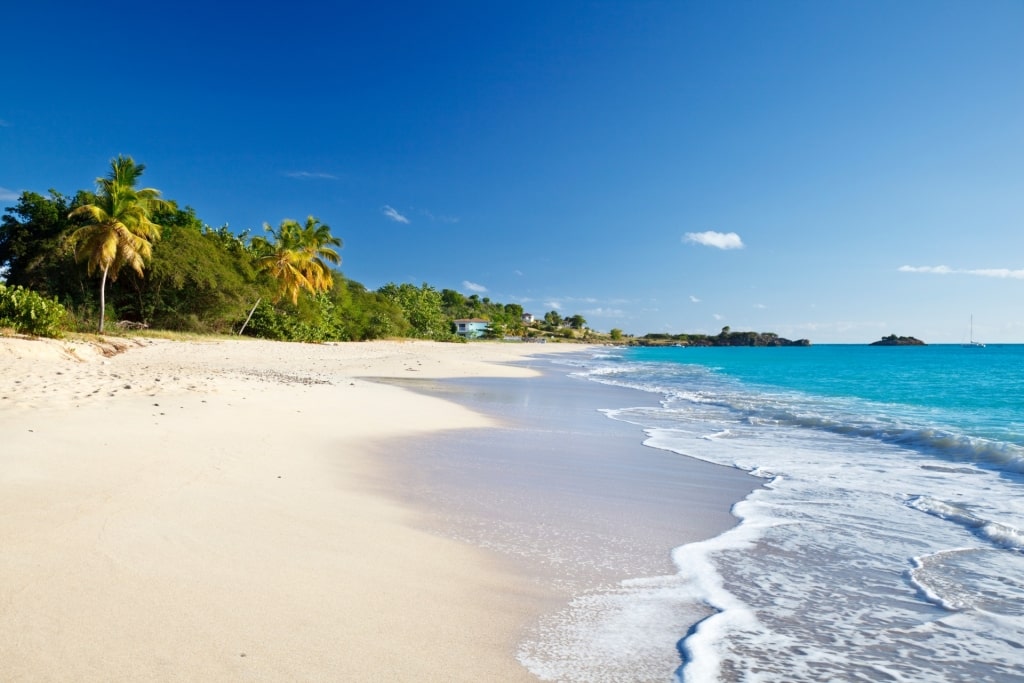
Turners Beach
This beach on the remote southwest coast is only 30 minutes from St. John’s, although in fairness, there are very few places on Antigua more than 30 minutes from St. John’s.
Nevertheless, Turners Beach feels more isolated than most. You leave your cares behind in this blissful Caribbean setting of sand, sea, and sunshine.
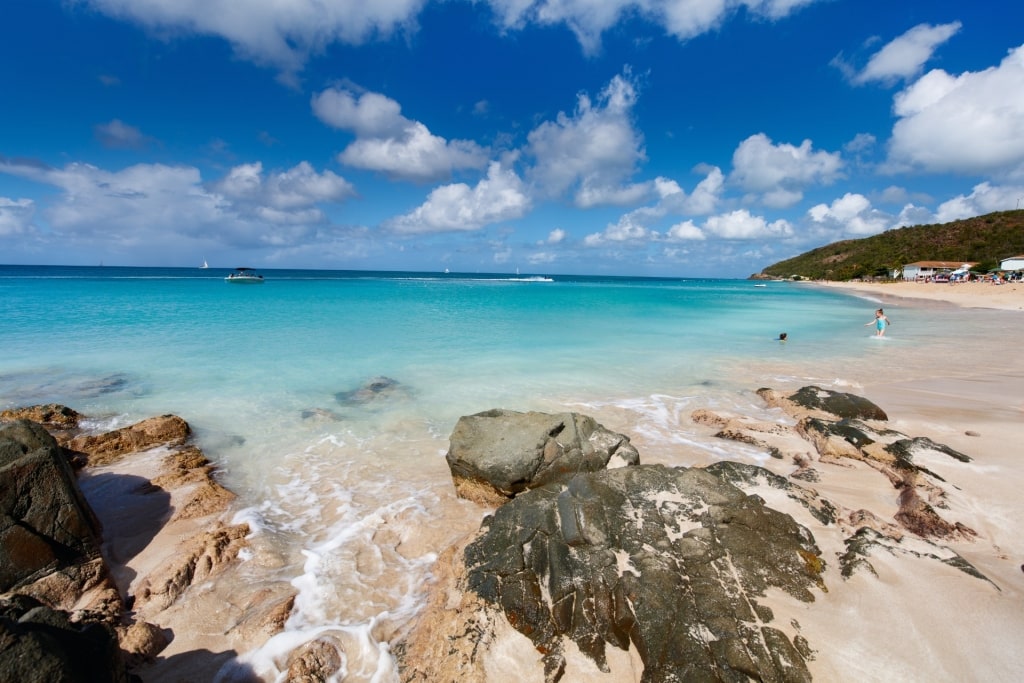
Turners Beach
Tearing yourself away from the beach bars and the restaurant, you’ll find good snorkeling as well. Calm, shallow waters, with excellent visibility, almost go without saying.
The clear water comes from lots of sand, but there are some more interesting rocky areas. Here’s where you’ll find more varied sealife to identify.
Read: When Is the Best Time to Visit Antigua?
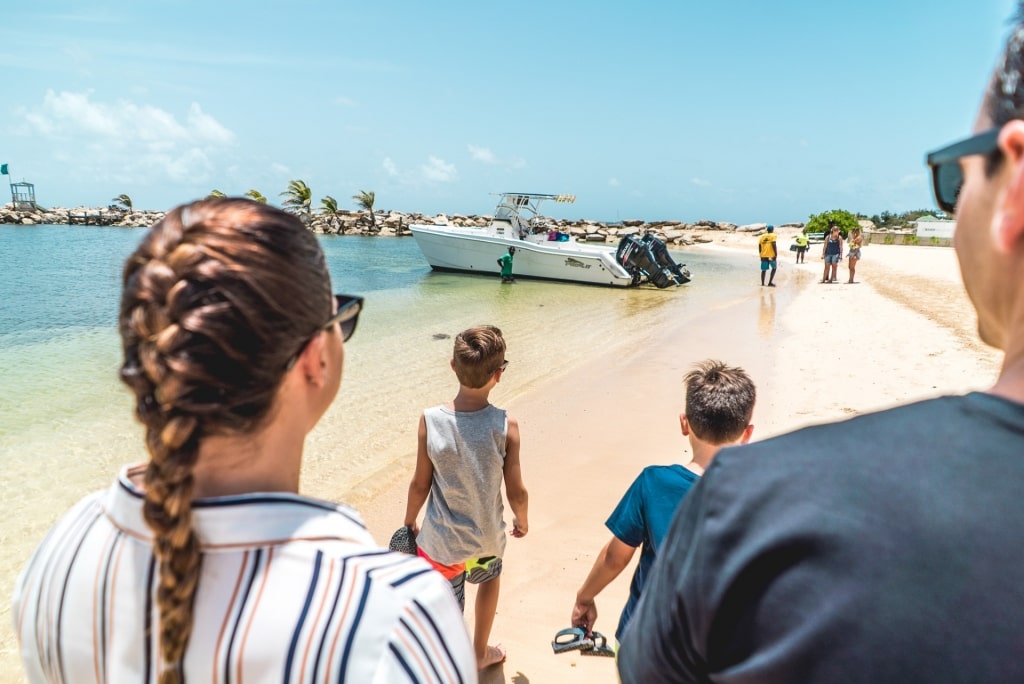
Prickly Pear Island
Has this list of the best places to snorkel in Antigua brought out the adventurer in you? Then browse our cruises to Antigua to find the perfect vacation for you and your loved ones.
